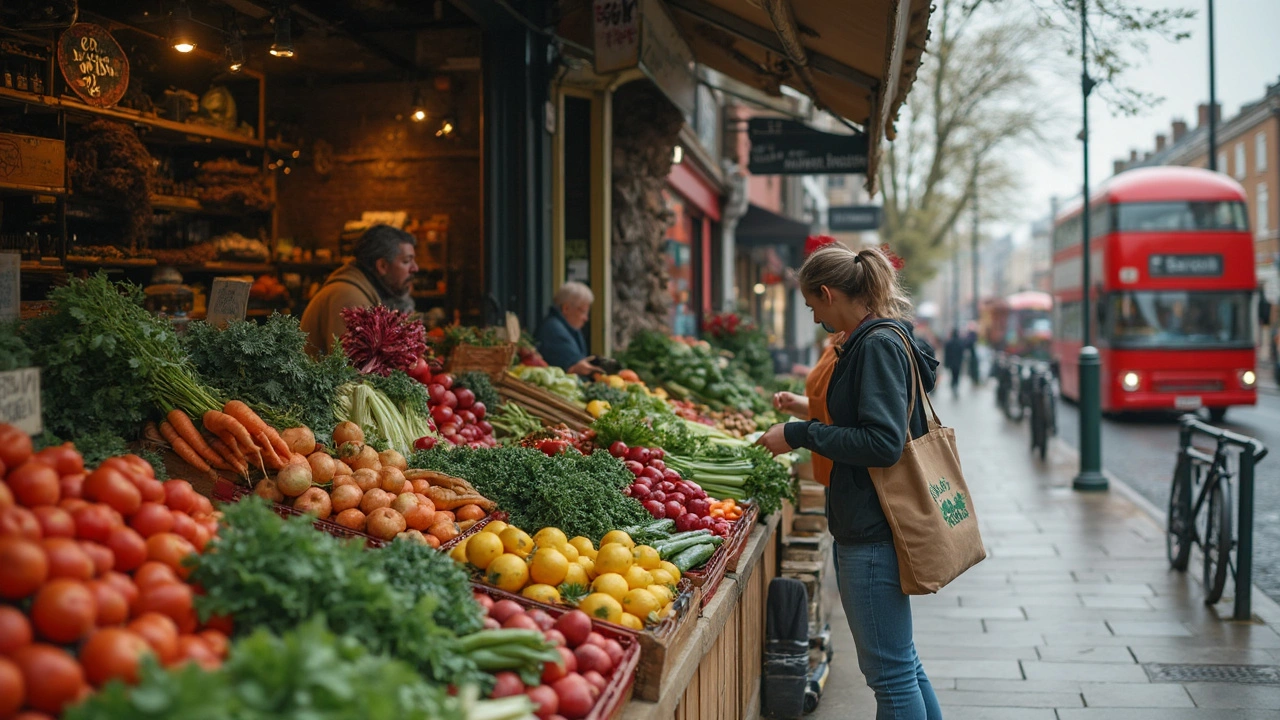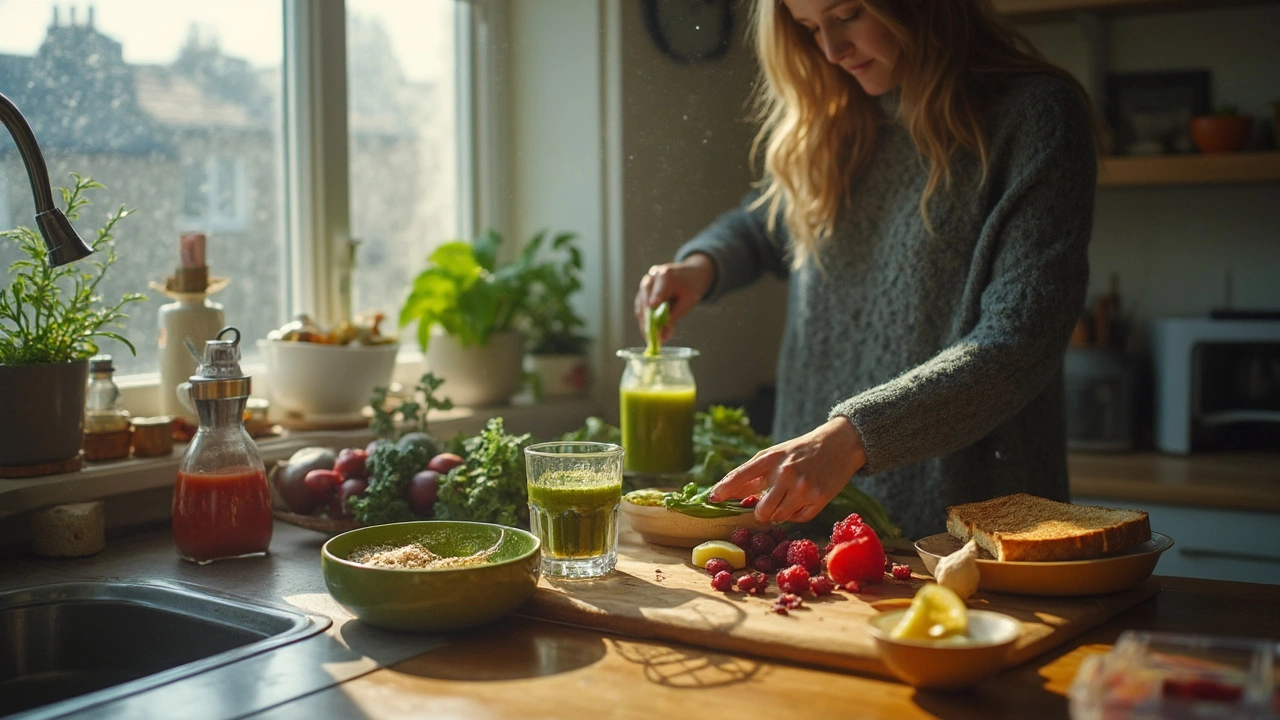Your body detoxes 24/7. It doesn’t wait for a cleanse, a challenge, or a holiday Monday. So why does health juice still matter? Because it makes the helpful stuff-hydration, micronutrients, plant compounds-easy to get in, while you support the organs doing the real work: liver, gut, kidneys, skin, and lungs. If you’re expecting a miracle reset, you’ll be let down. If you want a simple, evidence‑friendly way to reduce the junk load and feel lighter without starving, you’re in the right place.
Quick reality check from the science side: commercial “detox” claims are shaky (a 2015 review in the Journal of Human Nutrition and Dietetics found little clinical proof for detox diets). But the nutrients in well‑built juices-think leafy greens, beetroot, citrus, ginger-can nudge detox pathways and digestion in the right direction. That’s the lane we’ll stay in here: practical, safe, and food‑first.
TL;DR: Why Health Juice Helps (and Where It Doesn’t)
- Juice is a delivery system, not magic. It hydrates and concentrates vitamins, minerals, and phytonutrients that support liver and gut function.
- Skip juice‑only cleanses. Keep protein and fiber in the mix or you’ll risk muscle loss, blood sugar spikes, and rebound hunger.
- Build your glass: ~70% veg, ~30% fruit. Add something bitter (lemon, greens), something warming (ginger), and a fiber boost (chia) on the side.
- Best jobs for juice: start the day, bridge a long gap between meals, or replace ultra‑processed snacks. Worst job: replacing meals for days.
- Who should not DIY a cleanse: pregnancy, eating disorders, advanced kidney disease, insulin‑treated diabetes, or anyone on meds that interact with grapefruit or high‑vit K greens. Talk to your doctor first.
Step‑by‑Step: Use Health Juice for a Safe Detox (Without the Crash)
Think of this as a supported reset: food plus juice, not juice instead of food. If you want the shortest path, follow this template for 3-7 days.
-
Set your guardrails. Pick your duration (3 days for beginners; up to 7 if you’ve done it before). Keep coffee to one cup before noon, skip alcohol, and hit your water target. In Australia, the NHMRC’s adequate intake for fluids is about 2.7 L/day for women and 3.7 L/day for men (total water from all drinks and food). Aim for 8-10 cups of fluids, including your juices.
-
Use the 2‑juice rhythm. Drink one green‑leaning juice in the morning and one veg‑forward juice mid‑afternoon. Eat real, protein‑rich meals at lunch and dinner: eggs with sautéed spinach, tofu stir‑fry, grilled fish with brown rice and broccoli-keep it simple, heavy on plants.
-
Build the glass with the 70/30 rule. About 70% vegetables (cucumber, celery, kale, parsley, beetroot, carrot), 30% fruit (green apple, pear, orange, pineapple). Add lemon or lime for bitterness to support digestion, and fresh ginger for warmth. Bitter greens and citrus help bile flow; ginger can soothe the gut.
-
Add fiber back. Juicing strips most fiber, which the gut needs to bind bile acids and escort waste out. Two easy fixes: stir 1 tablespoon chia or ground flax into water after a juice, or pair the juice with a small handful of nuts. Apple pectin in whole fruit binds bile acids (American Journal of Clinical Nutrition, classic work from the late 1970s), so when in doubt, choose a smoothie or eat the fruit.
-
Keep protein steady. Your liver’s master antioxidant, glutathione, depends on amino acids (glycine, cysteine, glutamate). A 2018 review in Nutrients highlights this pathway. Include protein at each meal: Greek yogurt, eggs, tempeh, legumes, fish, or lean meat.
-
Sleep and sweat. Aim for 7-9 hours of sleep-your liver runs a night shift. Add gentle sweat most days (a brisk walk, a short jog, a sauna if you use one). Nitrates in beetroot juice can support blood flow; trials report modest blood pressure drops of ~4-10 mmHg with daily beetroot juice (Hypertension, mid‑2010s).
-
Know when to stop. Stop or scale back if you feel dizzy, light‑headed, or you’re chasing hunger all day. If you have diabetes or reactive hypoglycemia, keep fruit minimal and pair juice with protein/fat (yogurt, nuts), or swap to a smoothie with intact fiber.
Why this works: green veg bring minerals (magnesium, potassium), crucifers (broccoli, kale) upregulate the body’s detox enzymes via the Nrf2 pathway (Johns Hopkins researchers have published on sulforaphane for decades), and hydration helps kidneys clear solutes. You’re reducing the “incoming load” (alcohol, ultra‑processed foods) while feeding the pathways that already detox you daily.
Quick decision guide:
- If you own a juicer and enjoy the ritual, go homemade. If not, choose a bottled juice with veg listed first, no added sugar, and ≤12 g sugar per 250 ml.
- If you’re weight‑loss focused or have blood sugar issues, lean on smoothies (keep all the fiber) or chew the whole produce. Juice is a tool, not a must.
- If you train hard, don’t cut carbs to the floor. Use a beet‑carrot‑orange juice post‑workout and keep your normal meals.
One last thing: celery juice isn’t a miracle. It’s hydrating and high in potassium-that’s it. If you love it, great. If you don’t, you’re not missing a secret button.

Recipes, Examples, and Cheat Sheets (Plus a Handy Nutrition Table)
Use what’s in season where you live. In Perth right now, kale, citrus, parsley, and beetroot are easy to find and budget‑friendly. Here are plug‑and‑play recipes you can swap through a 3-7 day reset.
Basics to remember before you start:
- Wash produce well. Peel citrus; leave thin‑skinned apples and cucumbers unpeeled for more phytonutrients.
- Cold‑press juicers yield more juice with fewer bubbles; centrifugal juicers are fine but drink soon after.
- Store in a sealed bottle in the fridge for up to 24 hours. Add lemon to slow browning.
Six simple blends (250-300 ml each):
- WA Green Starter: cucumber (1), celery (2 stalks), kale (1 cup), green apple (1/2), lemon (1/2), ginger (2 cm).
- Beet Boost: beetroot (1 small), carrot (1), celery (1), orange (1/2), lemon (1/2), mint (a few leaves). Beets bring nitrates; go easy if you have kidney stones.
- Citrus Turmeric Calm: grapefruit (1/2; skip if on interacting meds), orange (1/2), carrot (1), turmeric root (2-3 cm), black pepper (a pinch after pouring), lemon (1/2).
- Spicy Celery Cooler: celery (3 stalks), cucumber (1/2), lime (1), green apple (1/2), jalapeño (tiny slice) if you like heat.
- Herb Garden Digestive: pear (1/2), fennel bulb (1/3), parsley (1 cup), lemon (1/2), ginger (2 cm), cucumber (1/2). Fennel helps with bloat.
- Recovery Smoothie (not a juice): spinach (1 cup), frozen pineapple (1/2 cup), 1/2 banana, Greek yogurt (1/2 cup) or tofu (1/2 cup), water to blend, chia (1 tbsp). Perfect when you need fiber and protein in one go.
Cheat‑sheet formulas:
- The 5‑ingredient rule: base (cucumber/celery) + leafy green + colorful root/veg + small fruit + acid (lemon/lime).
- Color code: green for minerals, orange for carotenoids, red/purple for nitrates and polyphenols.
- Fruit cap: 1 small piece per 300 ml juice. Keep sugars around 8-12 g per glass if blood sugar is a concern.
Nutrition snapshot (approximate values):
| Item (serve) | Sugars (g) | Fiber (g) | Energy (kcal) | Energy (kJ) |
|---|---|---|---|---|
| Orange juice (250 ml) | 21 | 0.5 | 110 | 460 |
| Apple juice (250 ml) | 24 | 0.2 | 115 | 480 |
| Carrot juice (250 ml) | 13 | 0.8 | 96 | 402 |
| Green juice (250 ml, kale/celery/apple) | 10 | 1.0 | 60 | 251 |
| Smoothie (250 ml, apple/spinach/water) | 15 | 4.0 | 90 | 377 |
| Orange (1 medium) | 12 | 3.0 | 62 | 260 |
| Carrot (1 cup, raw) | 5 | 3.6 | 52 | 218 |
Why this table matters: smoothies and whole produce keep the fiber that helps your gut “carry out the trash.” Juices hit faster-handy pre‑workout or as a snack-but add a fiber sidekick.
Smart shopping list (3-7 days):
- Veg: cucumbers (3-4), celery (1 bunch), kale or spinach (2 big bunches), parsley (1 bunch), beetroot (2-3 small), carrots (6-8), fennel (1), ginger (1 large hand), turmeric (1 small hand).
- Fruit: green apples (4-6), pears (2-3), lemons/limes (6-8), oranges (3-4), grapefruit (2; skip if on interacting meds).
- Add‑ins: chia seeds, ground flax, mint, black pepper (for turmeric), mineral water.
Pitfalls to avoid:
- Too much fruit. More fruit isn’t more “detox.” Watch the sugar.
- Skipping protein. You’ll feel flat and hungry. Keep 20-30 g protein at meals.
- Going hard, then binging. Plan a normal breakfast for Day 4 or Day 8 so you land the plane softly.
- Grapefruit with meds. It can alter drug metabolism (common with statins, calcium‑channel blockers). Ask your pharmacist.
Evidence notes for the curious:
- Detox diets: limited evidence for long‑term benefits (Journal of Human Nutrition and Dietetics, 2015 review by Klein & Kiat).
- Crucifers and detox enzymes: sulforaphane/Nrf2 pathway (Johns Hopkins group; multiple papers since the 1990s).
- Beetroot and blood pressure: dietary nitrate trials show modest reductions (Hypertension, early‑to‑mid 2010s RCTs).
- Dietary guidance: NHMRC Australian Dietary Guidelines note that 125 ml fruit juice can count as a serve occasionally, but whole fruit is preferred because of fiber (guidelines current as of 2025).
Mini‑FAQ and Next Steps
FAQ-quick, straight answers:
- Is detox real? Your body’s detox is real; diets aren’t doing it for you. The job is to reduce the incoming load and feed your natural systems.
- Will a 3‑day juice cleanse make me lose weight? Water and glycogen at first, maybe. Without protein and fiber, most of it comes back. Use juice with meals instead of as the only intake.
- Juice or smoothie-what’s better? Smoothies for fiber and satiety; juice for fast micronutrients and hydration. You can use both.
- How many days? Three days is plenty for a reset. Seven if you’re feeling good and eating enough. Not months.
- Can I drink coffee? Yes-keep it to one small cup before noon, skip the sugary syrups.
- What about workouts? Keep training. Take a small carb source before hard sessions (half a banana or a small beet‑carrot‑orange juice) and hit protein after.
- Is celery juice special? Hydrating, high in potassium, nice if you enjoy it. Not magic.
- Who should avoid juicing? Pregnancy, eating disorders, advanced kidney disease, insulin‑treated diabetes without medical guidance, and anyone on meds that interact with grapefruit or vitamin K heavy greens.
Next steps-pick your path:
- 24‑hour refresh (workday friendly): Morning green juice, normal protein‑rich lunch, afternoon veg‑heavy juice, simple dinner (fish, brown rice, broccoli), 8-10 cups water across the day.
- 3‑day weekend reset: Two juices daily, two balanced meals, no alcohol, one short sweat session each day, lights out by 10 pm. Batch juice on Day 0.
- 7‑day “gentle detox”: Same as the 3‑day but add a smoothie on days you train, and rotate greens (kale, parsley, rocket) to broaden nutrients.
Troubleshooting by scenario:
- Busy parent with no juicer: Buy a veg‑first bottled juice (veg listed before fruit, ≤12 g sugar per 250 ml). Pair with a boiled egg or Greek yogurt.
- Night‑shift worker: Use a smoothie at “breakfast” for fiber and protein. Keep one green juice for your mid‑shift slump. Blackout blinds for daytime sleep.
- Runner or lifter: Add salt if you sweat a lot. A beet‑carrot‑orange juice 60-90 minutes pre‑workout can feel great. Eat your normal carbs and protein.
- Sensitive gut (IBS): Start with low‑FODMAP options: cucumber, spinach, carrot, orange, lemon, ginger. Skip apple and pear at first.
If there’s one takeaway, it’s this: treat health juice detox as a supportive habit, not a punishment. Two smart juices a day, real meals, good sleep, and a bit of sweat-that’s the formula that actually sticks.





